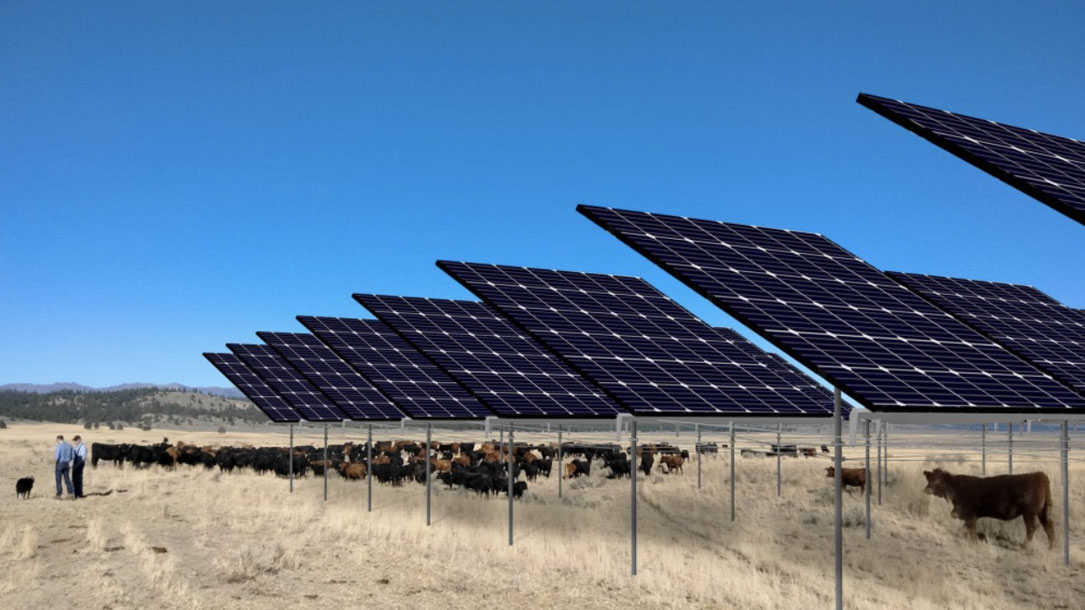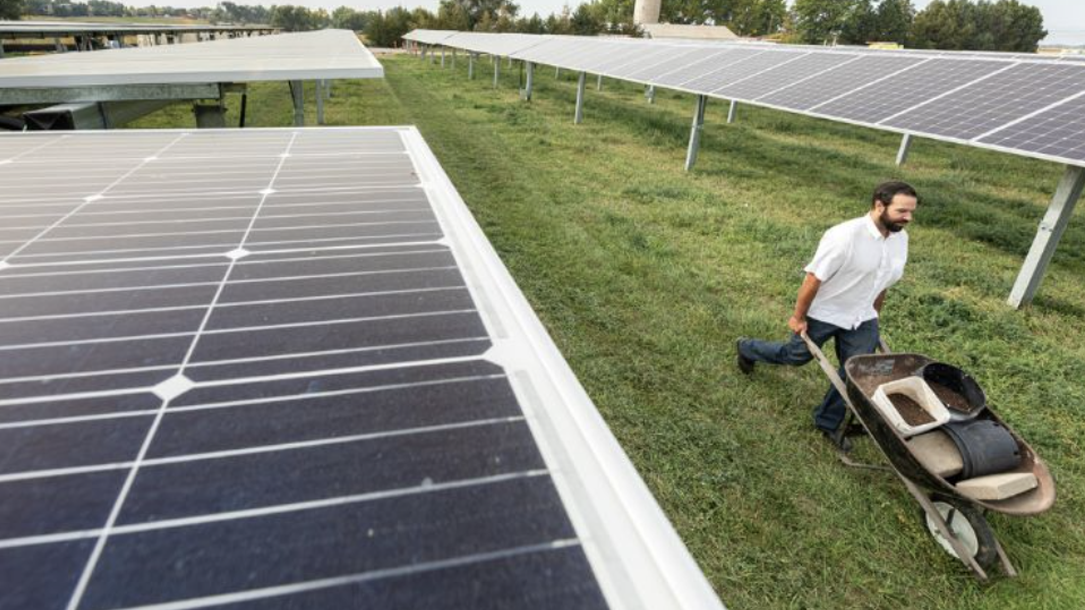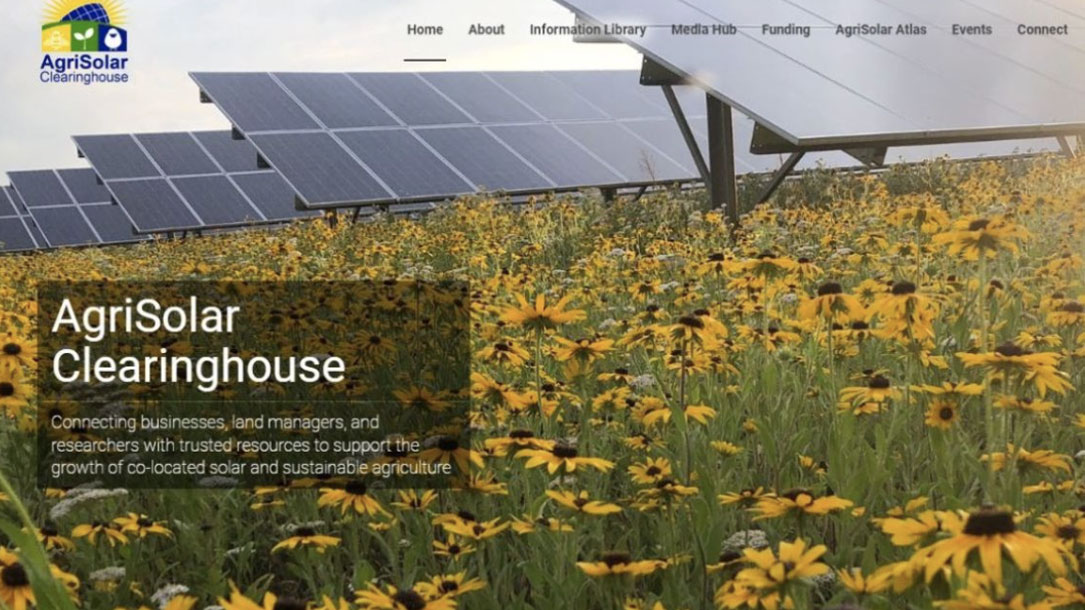
Solar grazing methods a centerpiece of inaugural agrivoltaics conference
The first U.S. agrivoltaics conference took place March 14 to 15, 2023 in Rosemont, Illinois, as sheep grazers sat amongst seed vendors and community solar project developers. On the first day of the conference, the Solar Farm Summit recorded 460 attendees, while speaking to pv magazine USA, executive producer Dan French said the number is likely above 500 strong.

Oregon State University research shows bright future for agrivoltaics
Oregon is home to more than 37,000 farms across 16 million acres of the state. Our agricultural producers raise animals, supply dairy products, and grow food – and sometimes even generate renewable energy. Wind energy is a good fit in several rural areas of the state where there are strong wind resources and development is compatible with land use and agricultural requirements. While many in the agricultural community have concerns about the ability to farm around solar arrays, for some Oregon farms and ranches, solar development could fit well into their cropping or grazing operations. Such “dual-use development” is subject to rules adopted in 2018 by the Oregon Land Conservation and Development Commission.

Cattle agrivoltaics on US ranch
An Oregon State University study shows that most of the prime, flat land near grid load is already in use as farmland, growing food or ranching livestock. In many US markets, including the Pacific Northwest, agrivoltaics is a solution for the food versus energy transition dilemma.
Agrivoltaics provides benefits for the farmer or landowner, the project developer and local communities. Ranching holds particular promise in the agrivoltaics community. It creates better soil composition for cows, sheep and other farm animals to graze, while creating a more natural soil composition around the panels, according to the Oregon State study…

New Jersey approves pilot program to demonstrate feasibility of agrivoltaics
The New Jersey Board of Public Utilities (NJBPU) has approved an agreement with the Rutgers University Agrivoltaics Program (RAP) to facilitate the development and implementation of a Dual-Use Solar Energy Pilot Program over the next three years.
The pilot program will provide incentives to solar electric generation facilities located on unpreserved farmland that plan to maintain the land’s active agricultural or horticultural use. Dual-use solar can provide farmers with an additional stream of revenue, assisting with farm financial viability enabling continued agricultural or horticultural production of land while also increasing the statewide production of clean energy…

Innovative AgriSolar design, a round-table discussion
Do you want to see solar that works with cows, horses, vineyards, orchards, vegetables, and other forms of agriculture? How about solar that doesn’t require perimeter fencing and is spaced apart to allow for equipment to grow crops or grow grass and hay crops?
Some of these solar designs might also work well for wildlife.
This webinar provides insights into what is already happening here in the U.S. and abroad. The solar developers show you what they are doing and how it can go to “scale.”
AgriSolar Clearinghouse hosts a webinar series with this round-table discussion featuring innovative solar designers Helical Solar, Sun Agri, Hyperion, Sandbox Solar, Solargik, RUTE Agrivoltaics, Soliculture, Stracker Solar, Taka Solar, and Sunstall.

Engage public, explore methods to secure NYS green energy
Solar-power developers need to explore using lower-quality agricultural land for solar energy, boost incentives for dual-use (combined agriculture and solar) options, avoid concentrated solar development and engage communities early to achieve New York’s green energy goals, according to forthcoming Cornell research.
“As farmland is generally flat and cleared, agricultural land will be the prime target for future solar energy development,” said Max Zhang, professor in the Sibley School of Mechanical and Aerospace Engineering, in the College of Engineering, and senior author of “Strategic Land Use Analysis for Solar Energy Development in New York State,” which will publish in August 2021 in Renewable Energy. “Good farmland, however, is not ideal.”

Made in the shade: Growing crops at solar farms yields efficiency
“There is potential for agrivoltaic systems – where agriculture and solar panels coexist – to provide increased passive cooling through taller panel heights [emphasis added], more reflective ground cover and higher evapotranspiration rates compared to traditional solar farms,” said senior author Max Zhang, professor in the Sibley School of Mechanical and Aerospace Engineering [at Cornell], “We can generate renewable electricity and conserve farmland through agrivoltaic systems.”
In New York, for example, about 40% of utility-scale solar farm capacity has been developed on agricultural lands, while about 84% of land deemed suitable for utility-scale solar development is agricultural, according to a previous research study from Zhang’s group…

Solar farms put cow comfort and crop yield ahead of harvesting electrons
Solar arrays that promise to generate happier, healthier cows and crops, while producing cheap electrons on the side, are being put into practice in France, following a series of government-led energy tenders with a difference…
To really drive home this focus, the French government used contracts for the difference where the price per MWh is set for 20 years above the market value to compensate for the prioritization of agriculture and livestock over maximum solar production…

Farmer first solar: Agrivoltaics webinar series
The AgriSolar Clearinghouse is an information-sharing, relationship-building public communications hub for all things agrisolar. The AgriSolar Clearinghouse is offering a free series of webinars regarding research on how solar and agriculture can work (and are working) together to enhance farm/ranch viability, soil health, and water management.
Webinar topics include: the cost of agrivoltaics, growing crops under solar panels, taste differences among crops grown under panels, solar and pollinator habitats, and more. You can sign up here, or watch recordings of past webinars.

Solar panels help French winemaker keep climate change at bay
A roof of solar panels shades Pierre Escudie as he inspects the last plump grapes to be harvested at his vineyard in southwest France, after a year of hard frosts and blistering heat that damaged many of his neighbors’ crops.
The solar panels insulate the grapes during periods of extreme cold and shield them from the sun’s harsh rays during heat waves. The panels also rotate to allow more light to hit the vines on more overcast days…












